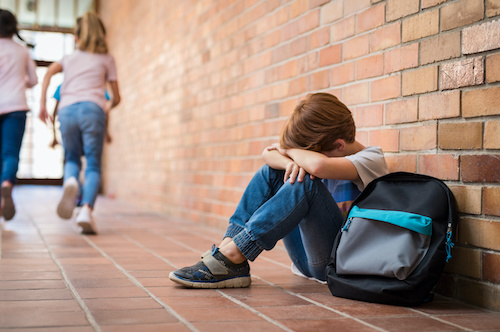Unseen and often silent, the shadows of bullying loom within the walls of schools, casting a dark cloud over the lives of countless students. The PACER Center’s National Bullying Prevention Center engages and empowers kids to combat bullying in all its forms. Through the Students with Solutions contest, my 5th grade students worked together to raise awareness about bullying and encourage children to actively participate in addressing this issue. This challenge amplified their voices and empowered them to inspire and support one another, creating a united front against bullying.
The winning entry within the “Student with Solutions” national anti-bullying competition this year is a video by my two 5th grade classes within the Birmingham City Schools System. The students wrote, filmed, and edited the video. It inspires unity and support, drawing from the students’ experiences, with the main message being that bullying hurts and everyone matters.
Students enjoy technology, so being able to integrate technology in an academic setting is highly advantageous. In this instance, we were able to combine social-emotional learning and technology, which are both important in this day and age.
Bullying refers to repeated and intentional aggressive behavior, where one or more individuals target another person to harm, intimidate, or exert control over them. Bullying can take various forms, including:
Physical bullying: This includes physical acts of aggression, such as hitting, kicking, pushing, tripping, or damaging someone’s belongings.
Verbal bullying: Verbal bullying involves using words, gestures, or language to hurt, belittle, insult, tease, or intimidate others. It includes name-calling, taunting, mocking, or making derogatory remarks about someone’s appearance, abilities, or characteristics.
Relational bullying: Also known as social bullying, it focuses on manipulating social relationships to harm others. It includes excluding someone from a group, spreading rumors, gossiping, publicly embarrassing them, or intentionally damaging their reputation.
Cyberbullying: With the rise of digital communication, cyberbullying has become a prevalent form of bullying in schools. It occurs through electronic devices and platforms such as social media, text messages, emails, online forums, or gaming platforms. Cyberbullying can involve sending hurtful messages, spreading rumors, sharing embarrassing content, or engaging in online harassment.
The connection between bullying and mental health
Exploring the connection between bullying and mental health is paramount. Bullying profoundly affects a person’s psychological well-being, especially when the victim is a child. The emotional toll of constant harassment, fear, and isolation can disrupt one’s overall mental state and lead to heightened stress levels and a diminished sense of self-worth. Victims often experience fear, sadness, and anger, which increases the risk of developing mental health issues such as anxiety, depression, and low self-esteem.
Bullying can also result in social isolation and have long-term effects, impacting individuals well into adulthood. Recognizing the connection between bullying and mental health underscores the importance of early intervention, support systems, and creating safe and inclusive environments that prioritize empathy and compassion.
Building social and emotional skills
While academic subjects such as math, reading, science, and social studies are essential, promoting a sense of happiness and safety among students is equally imperative. Student-involved antibullying campaigns, such as “Students with Solutions,” significantly promote social and emotional learning among students. Social and emotional learning (SEL) is acquiring the knowledge, attitudes, and skills to understand and manage emotions and navigate social interactions. Bullying is often a maladaptive coping mechanism toward internal emotional turmoil or pressure exerted by external social factors. Unfortunately, it also causes significant emotional distress to the victims. SEL can cultivate empathy by helping students understand the emotional toll of bullying on individuals.
Reflecting on their behavior, students gain self-awareness and learn to regulate their emotions effectively. They develop critical thinking and ethical judgment through responsible decision-making, empowering them to intervene against bullying. These campaigns also foster a positive school climate where social and emotional well-being is prioritized, creating an environment where students feel safe, respected, and empowered.
Creating a positive and lasting impact
Harnessing the power of student experiences and active participation can be a transformative approach to combating bullying. Most students have encountered bullying in some form or other as victims, observers, or perpetrators.
Cultivating a supportive and inclusive school environment is possible by tapping into these encounters and empowering them to take a stand. Students can become advocates for change, driving awareness, empathy, and understanding among their peers. Through their stories, ideas, and actions, they become catalysts for creating a culture where bullying is confronted head-on, fostering a community that values kindness, respect, and compassion.
We forge a powerful alliance against this pervasive issue by amplifying student voices. We are fostering a generation of upstanders who champion empathy and help build a safer and more inclusive school environment for all.
The hope is that when students learn about bullying at a young age, it instills positive community values that enable them to choose compassion over cruelty, even in adulthood. They become advocates for kindness, creating lasting change in their communities, schools, and even the wider world.
Related:
3 key parts of this district’s student mental health support
- 4 ways to encourage play in education - April 25, 2024
- CoSN IT Leader Spotlight: Lisa Higgins - April 25, 2024
- It’s time to pay student teachers - April 25, 2024

